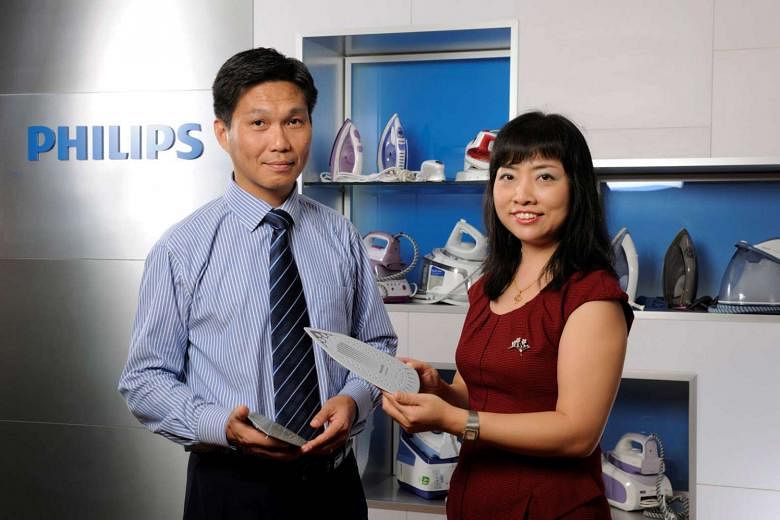Health technology company Philips is a household name when it comes to steam irons. Thanks to the innovations borne out of Dr Linda Wu and A*STAR's Singapore Institute of Manufacturing Technology (SIMTech) researchers, several of the brand's steam irons were made even more user-friendly.
This is because of a special layer of coating that is enabled by a special chemical process known as sol-gel technology, developed by Philips and Dr Wu and the team of researchers. Sol-gel fuses organic materials, such as polymers, with inorganic materials, like ceramic, to create a coating that has many uses.
Working with Philips, the research team was challenged to improve the sol-gel the company had already developed to make it adhere better to the aluminium base of its steam irons to withstand high heat, extreme temperature changes and years of wear and tear.
Their joint efforts paid off with a sol-gel process that introduced a multi-layer coating system to allow the iron to glide smoothly across fabrics without picking up colour stains from clothes, would not come off even under high heat, and does not crack even when the iron is dropped from height.
The team at A*STAR's SIMTech and Philips received the National Technology Award in 2002 for this wonderful innovation.
Other applications of sol-gel
The uses of sol-gel in irons are not the only everyday appliance to have been improved.
Sol-gel can be used as the hard coating for spectacle lenses, water repellent coatings for textiles, and even for anti-fogging coating on car mirrors.
SIMTech has also applied variants of sol-gel to create a smart window coating for green buildings, erosion-resistant anti-ice coatings for aerospace application, and decorative coatings for electronics.
Collaboration between private and public organisations spurs innovations
Collaboration between researchers and private companies lead to impressive outcomes such as faster research development and quicker technology adoption. In this case, Philips could tap on the expertise of applied research scientists at A*STAR to improve the use of sol-gel, even as the company commercialised its use by taking the improved process to mass production levels.
The initial success achieved by A*STAR and Philips over sol-gel has not stopped there. Dr Wu shares that SIMTech has continued to support its production by ensuring quality control and providing product analysis. Several other new research projects and supporting projects have since been conducted and completed, with Philips adopting the results in their products.
Commenting on the mutual benefits of working with a private company to produce something really useful for consumer, Dr Wu says: "Researchers who work with private companies can speed up technology adoption, leading to fast commercialisation. The company has a better chance to become a market leader, as speed is crucial in a highly competitive business environment."
"The positive support has given us the experience and confidence in the implementation of coating technologies in other industrial applications."
Awards recognise efforts of research community
The PSTA has contributed to the conducive environment for scientists who conduct research in Singapore. She says: "In the early years, the awards include Science award and Technology award separately, which encouraged both upstream research being impactful to the research community, and technologies that have impacted the industry and economy of Singapore."
-
Open for submission: President's Science and Technology Awards
The annual President's Science and Technology Awards (PSTA) are the highest honours bestowed on exceptional research scientists and engineers in Singapore, to recognise their excellent achievements in science and technology. Any organisation (public or private) based in Singapore that embarks on R&D development and innovation is eligible to submit.
Project submission deadline: March 24, 2017.
To nominate projects and find more information, head to PSTA's website.
Winning the award in 2002 was a high point for her. She says: "It was a mark of recognition of my R&D work and has encouraged me to continue in my career as a researcher."
She has since gone on to pursue her PhD and now leads a research team at SIMTech that works on functional coatings.
But Dr Wu felt that more recognition could be given to local researchers with successful innovations that have impacted the society in tangible ways.
One way to achieve that is by getting the scientific community to nominate their own or their colleagues' projects for the President's Science and Technology Awards (PSTA).
She says: "Good work should always be shared so that it can inspire our young researchers."

